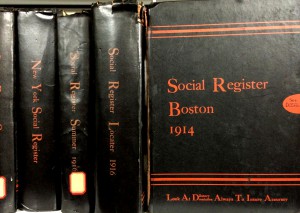 In my role as a technical services librarian, I’ve recently been working on adding issues of the Social Register published between 1890 and 1923 to the NEHGS Digital Library. Started in 1886, this publication is a directory of names and addresses of prominent American families. At its inception, the Social Register was primarily populated by descendants of early Dutch and English settlers of New York, but the scope of the series quickly expanded, and by 1918 there were eighteen annual volumes representing twenty-three U.S. cities. The Social Register Association continued publishing separate volumes for different cities until 1976, when the listings were consolidated into a single publication. Continue reading Mining the Social Register, an unexpected resource
In my role as a technical services librarian, I’ve recently been working on adding issues of the Social Register published between 1890 and 1923 to the NEHGS Digital Library. Started in 1886, this publication is a directory of names and addresses of prominent American families. At its inception, the Social Register was primarily populated by descendants of early Dutch and English settlers of New York, but the scope of the series quickly expanded, and by 1918 there were eighteen annual volumes representing twenty-three U.S. cities. The Social Register Association continued publishing separate volumes for different cities until 1976, when the listings were consolidated into a single publication. Continue reading Mining the Social Register, an unexpected resource
Monthly Archives: March 2014
The earliest mass migration of the Irish to America
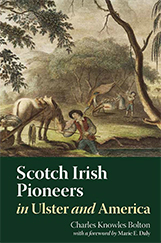 In Scotch Irish Pioneers in Ulster and America, his classic study of the eighteenth-century “Scots-Irish” exodus from Ulster to America, Charles Knowles Bolton cites court records, newspapers, correspondence and other primary sources. The book provides specific details about immigrant communities in New England, Pennsylvania, and South Carolina, and lists many immigrants and their origins in Ulster. Continue reading The earliest mass migration of the Irish to America
In Scotch Irish Pioneers in Ulster and America, his classic study of the eighteenth-century “Scots-Irish” exodus from Ulster to America, Charles Knowles Bolton cites court records, newspapers, correspondence and other primary sources. The book provides specific details about immigrant communities in New England, Pennsylvania, and South Carolina, and lists many immigrants and their origins in Ulster. Continue reading The earliest mass migration of the Irish to America
Mid-century migration from Iraq to Mexico to the United States

While interning at the American Jewish Historical Society—New England Archives and processing their collection of the Hebrew Immigrant Aid Society (HIAS), I came across the interesting case of the Isak Aghassi family, an Iraqi Jewish (or Mizrahi) family who for years struggled to immigrate to the United States, first from Iraq and then from Mexico. The Aghassis’ story is an extraordinary one of resolve and courage that epitomizes the struggle Iraqi Jews went through before, during, and after the period of the Second World War. Their story reveals another side of the Jewish struggle, one that is not as commonly known or understood. Continue reading Mid-century migration from Iraq to Mexico to the United States
Picking families for the Early New England Families Study Project
 My father, borrowing a line from Henry Ford, used to tease me that I could pick any color apple I wanted in the basket “as long as it was red.” (They were all red.) I have been asked to explain how I choose which families to do for the Early New England Families Study Project. The answer is I can pick any family I want – once they are in the basket. Continue reading Picking families for the Early New England Families Study Project
My father, borrowing a line from Henry Ford, used to tease me that I could pick any color apple I wanted in the basket “as long as it was red.” (They were all red.) I have been asked to explain how I choose which families to do for the Early New England Families Study Project. The answer is I can pick any family I want – once they are in the basket. Continue reading Picking families for the Early New England Families Study Project
An interview with Marilynne Roach: Part Two
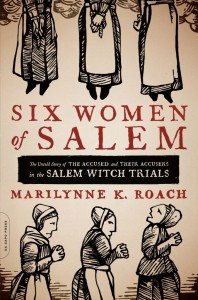 Marilynne K. Roach will lecture tonight at 6 p.m. at the New England Historic Genealogical Society (99-101 Newbury Street in Boston). Marilynne’s most recent book is Six Women of Salem: The Untold Story of the Accused and Their Accusers in the Salem Witch Trials, published by Da Capo Press.
Marilynne K. Roach will lecture tonight at 6 p.m. at the New England Historic Genealogical Society (99-101 Newbury Street in Boston). Marilynne’s most recent book is Six Women of Salem: The Untold Story of the Accused and Their Accusers in the Salem Witch Trials, published by Da Capo Press.
Scott C. Steward: You have written on a variety of subjects for a variety of audiences. What is it about Salem and the witchcraft trials that keeps you interested in the subject? Continue reading An interview with Marilynne Roach: Part Two
An interview with Marilynne Roach: Part One
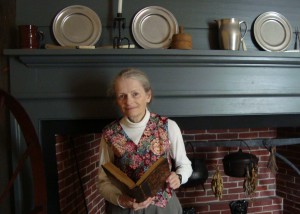
Marilynne K. Roach will lecture tomorrow at 6 p.m. at the New England Historic Genealogical Society (99-101 Newbury Street in Boston). Marilynne’s most recent book is Six Women of Salem: The Untold Story of the Accused and Their Accusers in the Salem Witch Trials, published by Da Capo Press.
Scott C. Steward: Your subjects are the accused and their accusers, and come from several economic and social strata. What makes them representative?
Marilynne K. Roach: The six women in my book, besides being specific individuals, can represent to some extent others of their varying stations in life: accused, accusers and both in one; free and slave; rich, poor, and middling; survivors and those who died. I also chose these six because enough information about their respective lives was available. Continue reading An interview with Marilynne Roach: Part One
The threat of witchcraft
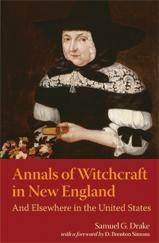 Our early New England ancestors were well acquainted with the threat of witchcraft. Dread of this phenomenon, and particularly of those in its thrall, was reinforced to them in warnings from clergymen about the dangers of falling in league with the devil. These fears were further punctuated by the occasional accusations or cases in various towns throughout the region. Authorities of no less stature than John Winthrop recorded such incidents in their diaries. Continue reading The threat of witchcraft
Our early New England ancestors were well acquainted with the threat of witchcraft. Dread of this phenomenon, and particularly of those in its thrall, was reinforced to them in warnings from clergymen about the dangers of falling in league with the devil. These fears were further punctuated by the occasional accusations or cases in various towns throughout the region. Authorities of no less stature than John Winthrop recorded such incidents in their diaries. Continue reading The threat of witchcraft
Changing my expectations, one search at a time
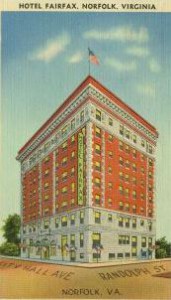 Expectations are tricky. As genealogists, we should always be on the look-out for new information, recognizing that the data sought may be in a different location, or format, or offer different content than we had expected.
Expectations are tricky. As genealogists, we should always be on the look-out for new information, recognizing that the data sought may be in a different location, or format, or offer different content than we had expected.
Lately, as I’ve mentioned, I have been playing around with Google searches. A few days ago, I thought I might look for information about my maternal grandfather’s father, a man I’ve grown used to knowing very little about. His name was John Frank Bell (1878-1944), and he managed hotels in Norfolk, Virginia. He was married twice, to my great-grandmother Minnie Estelle Jackson (1876-1935) and to a woman my grandfather always referred to as Marjorie Feller. In my previous research on this second marriage, I had found a woman who seemed to fit the bill, a Marjorie Feller Jarman (1899-1995) who was twenty years Frank Bell’s junior and actually outlived her stepson, who died in 1994. Continue reading Changing my expectations, one search at a time
New York newspapers as a substitute for vital records
 In the 22 January 2014 issue of NEHGS’ Weekly Genealogist, a ‘story of interest’ highlighted the sad plight of 17,000 square feet of old newspapers held by the New York State Library in Albany. Faced with the demand to archive an increasing amount of education department paperwork, the article – “State Library’s Tough Calls on What to Save, What to Shred” – illustrated how once treasured collections are now losing the battle for available storage space. Continue reading New York newspapers as a substitute for vital records
In the 22 January 2014 issue of NEHGS’ Weekly Genealogist, a ‘story of interest’ highlighted the sad plight of 17,000 square feet of old newspapers held by the New York State Library in Albany. Faced with the demand to archive an increasing amount of education department paperwork, the article – “State Library’s Tough Calls on What to Save, What to Shred” – illustrated how once treasured collections are now losing the battle for available storage space. Continue reading New York newspapers as a substitute for vital records
Conserving an historic family tree

NEHGS is always looking to acquire family trees to add to our collection. They come to us through donation or purchase, and their condition on arrival varies from pristine and framed to dirty and frayed. Many a family tree crosses the threshold of the Society’s new Conservation Lab, where it is cleaned and repaired, resulting in a piece which can be safely stored or displayed. Continue reading Conserving an historic family tree